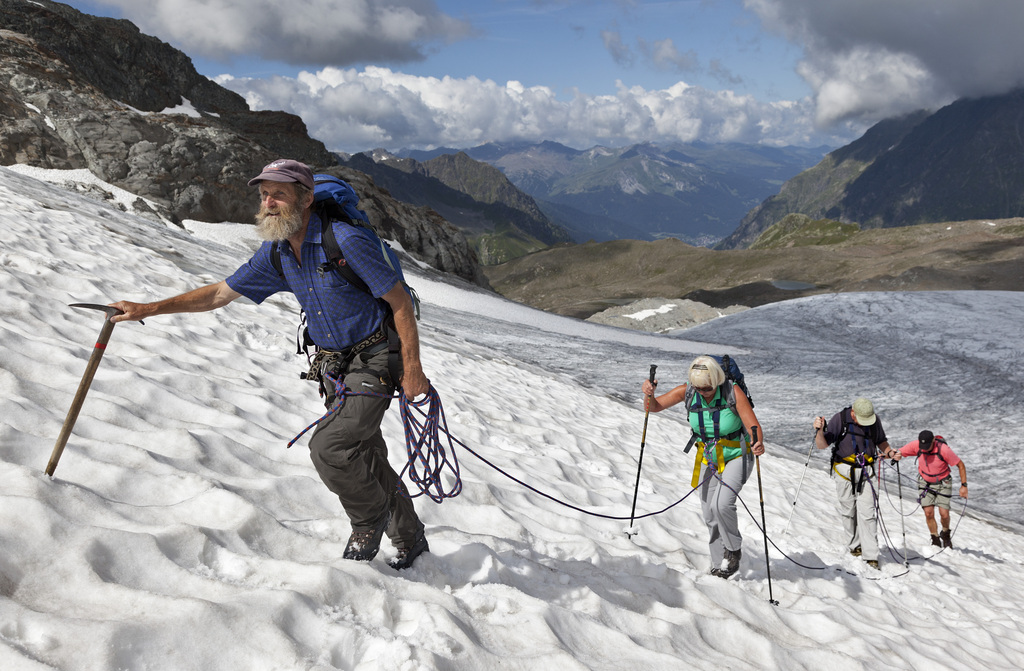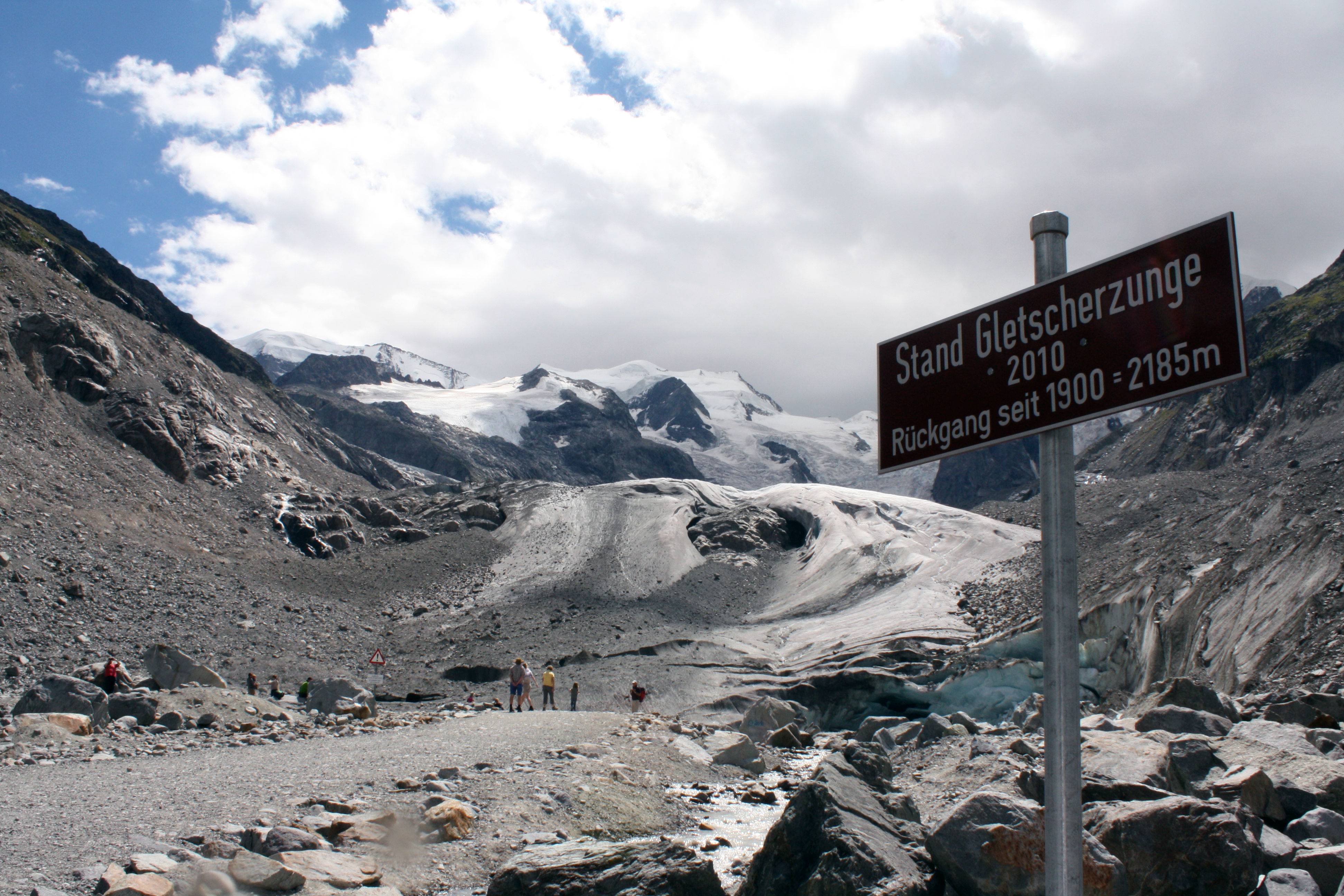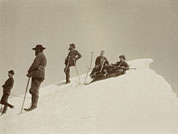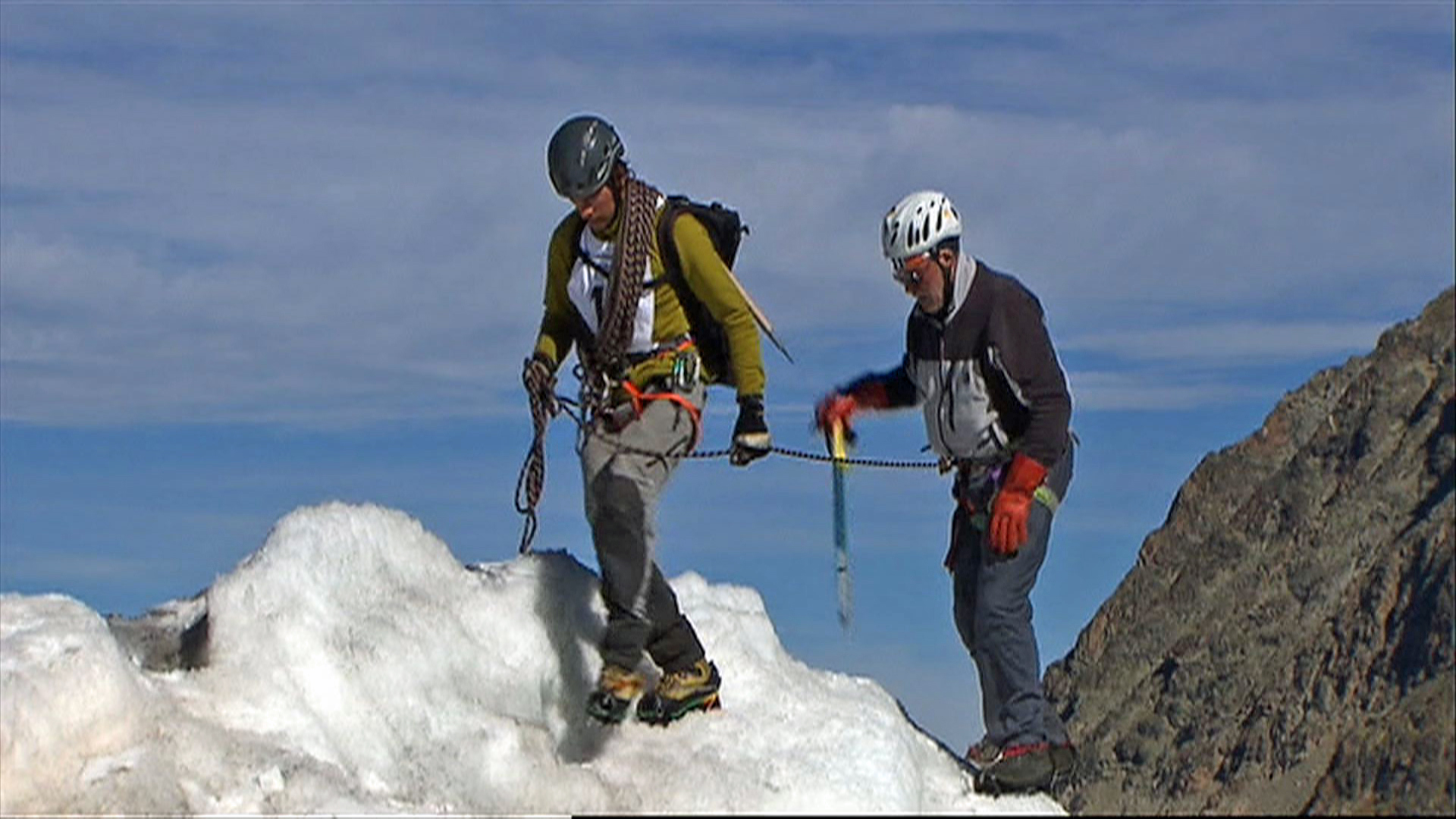Swiss quality leveraged at highest altitudes

Mountain guiding is a high risk job. The Swiss men and women paid to do the work lead customers up and down peaks that are prone to avalanches and rock falls. But the latest threat comes from foreign competition.
The world was reminded of the dangers of mountain climbing this summer when an avalanche on a peak in the Mont Blanc massif buried several climbers, including guides from Switzerland. Nine people died, including one Swiss, and several others were injured.
The accident also pointed out the mobility of guides, some of whom had travelled across Europe to take their clients up Mont Blanc, the Alps’ highest peak at 4,810m, which straddles the French-Italian border.
Switzerland, with its collection of lofty peaks, many above 4,000m, is a popular destination for many climbers from around the world. And with the strength of the Swiss franc and high Swiss living costs, it’s often cheaper to hire foreign guides.
The Swiss Mountain Guides Association recommends that a guide should earn SFr645 ($659) per day, which can be lower or higher based on the season, the number of participants and the duration and difficulty of a tour.
Tours led by companies based in European Union countries can be significantly less expensive. For example, the Association of German Mountain and Ski Guides recommends a daily base rate of €300 ($442). At the current SFr1.20 fixed euro exchange rate, that’s equivalent to about SFr360 – which could represent a big savings, especially on a multi-day tour.
Gian Luck, head of the mountaineering school in Pontresina, tells swissinfo.ch that in the past few years, he is seeing more foreigners leading clients around mountains in his home turf in southeastern Switzerland.
At what cost?
“Some Swiss companies are famous for only working with German guides. And some Swiss clients hire foreign guides to save money. We’re a small community, we see it all,” he said.
The work of Luck and the other guides of the Pontresina school is varied. One day, it can be acquainting a novice to alpinism, the next assisting an experienced mountaineer to reach the summit of his dreams.
“Don’t be afraid to stomp down hard. More spikes in the ice is always better than less,” Luck tells a beginner learning how to use crampons, explaining how important proper usage is to avoid accidents while walking or climbing on ice.
The guide explains that part of the cost-cutting efforts by some companies can increase risks. He has heard of guides taking more guests out on Piz Palü – one of the best known peaks in the region – than is recommended.
“There’s a reason why we say go out with three and not four people. It’s safer for everyone. In the end, you are all roped in together and if one person falls, everyone falls,” he says.
Roped in
Luck’s comments are echoed by Hermann Biner, president of the International Federation of Mountain Guides Association (IFMGA). He says some companies are increasing the number of recommended guests on high alpine tours in order to increase revenue.
“Big alpine schools often start with six or seven guests per guide on the tour around the Monte Rosa hoping the guests are so tired that they can’t traverse the Dufourspitze at the end,” he explains.
A potentially perilous practice considering that the recommended number of guests for the 4,618m-high Dufourspitze, located in canton Valais, is a maximum of two.
“It’s true that because of the high Swiss franc, we feel the pressure of guides from other countries. But many other organisations feel that way, as well. I think the real issue is that some guides are not respecting essential local safety rules, like how many clients they take out on a given route,” Biner adds.
However he points out that part of the mission of the IFMGA, founded in 1965, is “to facilitate the ability of mountain guides to work abroad, on mountains all over the globe”.
The IFMGA represents guide associations from 20 countries, including Switzerland, with a total membership of about 6,000. Biner, a mountain guide with 40 years of experience, is from Zermatt and sympathises with price pressures that Swiss guides are currently facing.
Luck has confronted the price challenge by emphasising his company’s local expertise, high quality tours and attention to safety. By early August, Pontresina’s mountain climbing school had counted more than 5,000 guests this summer – a five-year high.
New age
Luck has also had a hand in bringing what is billed as canton Graubünden’s oldest school of its kind into the age of total outdoor adventures, offering everything from glacier walks and high alpine tours to ‘via ferrata’ climbs (routes up steep faces secured by fixed cables, holds and ladders) and canyoning.
“I certainly am capable of doing this tour on my own, but with my family, I just feel a lot safer being out here with a professional who’s from the area,” one man from Lucerne explains during a guided glacier tour.
The guide is Werner Steininger. Complete with a feathered cap, Steininger looks like he has walked out of a history book on Swiss mountain guides. He has worked at the Pontresina school for the past 20 years and exudes the kind of authenticity many people seek when they pay for a tour in the Swiss Alps.
“I am probably the last guide on this mountain who still smokes a pipe,” he says as he packs it with tobacco, amusing his small group of hikers ready to embark on a five-hour glacier tour from the Diavolezza peak down to the tip of the Morteratsch glacier.
Of the 80 guides employed by the Pontresina school during the summer high season, almost all of them are from or live permanently in canton Graubünden. Only two are not Swiss—one of whom is from just over the Swiss-Italian border. For Luck, local expertise is what differentiates his school from the competition.
On average, 124 people die in accidents in the Swiss Alps each year.
Hikers normally account for the largest number of fatalities (64 in 2011) followed by those travelling in the high Alps (often requiring mountaineering skills) or on ski tours.
A variety of leisure activities accounted for 22 deaths last year, including hunting (8), snowshoeing (7) and mushroom collecting (3).
Close to half of all deaths each year occur on snow or ice.
Four to five times more men die while pursuing a leisure activity in the Alps than women.
Source: Swiss Alpine Club
(With input from Dale Bechtel)

In compliance with the JTI standards
More: SWI swissinfo.ch certified by the Journalism Trust Initiative



You can find an overview of ongoing debates with our journalists here. Please join us!
If you want to start a conversation about a topic raised in this article or want to report factual errors, email us at english@swissinfo.ch.